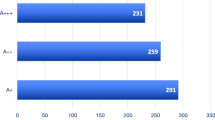Abstract
Since the introduction of the energy label for household dishwashers in the EU, manufacturers have been incentivised to reduce resource consumption and increase the energy efficiency of their appliances. Technological progress has led to very efficient programmes with cleaning cycles of 3 to 4 h or longer. The European Commission recently initiated a revision of the energy label and Ecodesign requirements, leading to their adjustment to the state of the art and to actual usage patterns. The University of Bonn was tasked with investigating dishwashing habits in Europe. An online survey was conducted in 11 countries of the EU with more than 5000 participants. The survey focused on the choice of programme, attitudes towards energy-saving programmes and practices and the willingness to apply them. It appears that consumers are willing to apply energy-saving practices and to use energy-saving programmes, but the acceptance of long cycles that take more than 2 h is low, which stands in contradiction to the fact that 19% of all dishwashing cycles are run in the Eco programme, which takes more than 2 h in most cases. The percentage of people who understand that long cycles can be energy-efficient is smaller than the percentage of those who do not believe this. The statements of the participants are contradictory regarding the importance of saving energy and of programme duration. The results of the survey point out the importance of better consumer education and better communication by manufacturers, consumer organisations and legislation.









Similar content being viewed by others
References
Alborzi, F., Schmitz, A., & Stamminger, R. (2016). Long wash cycle duration as a potential for saving energy in laundry washing. Energy Efficiency, 09.
Bichler, S. (2014). Verbraucherakzeptanz von Energieeinsparpotentialen an automatischen Geschirrspülmaschinen. Dr. oec. troph. Dissertation, Rheinische Friedrich-Wilhelms-Universität.
Bichler, S., Gorny, S., Seifert, M., Kessler, A., & Stamminger, R. (2015). How to improve sustainability and environmentally friendly behaviour in automatic dishwashing? Example: Germany. Tenside Surfactants Detergents, 52, 340–350.
Borg, L., & Hogberg, L. (2014). Organization of laundry facility types and energy use in owner-occupied multi-family buildings in Sweden. Sustainability, 6, 3843–3860.
CECED (2014). Internal data. European Committee of Domestic Equipment Manufacturers.
CLASP. (2013). Estimating potential additional energy savings from upcoming revisions to existing regulations under the ecodesign and energy labelling directives: a contribution to the evidence base.
European Commission (2010a). Commission delegated regulation (EU) No 1059/2010 of 28 September 2010 supplementing Directive 2010/30/EU of the European Parliament and of the Council with regard to energy labelling of household dishwashers.
European Commission (2010b). Commission regulation (EU) No 1016/2010 implementing Directive 2009/125/EC of the European Parliament and of the Council with regard to ecodesign requirements for household dishwashers.
Forum Waschen. (2016). Online-Spülvergleichsrechner [Online]. Industrieverband Körperpflege- und Waschmittel e. V. (IKW). Available: http://forum-waschen.de/online-spuelvergleichs-rechner-abwasch-per-hand-maschine.html. Accessed 30 Sept 2016.
GfK (2013). GfK Panelmarkt. Das Energielabel - 5. aktualisierte Ausgabe September 2013: ZVEI - Zentralverband Elektrotechnik- und Elektronikindustrie e.V.
GfK (2016). GfK Panelmarkt. Das Energielabel - 7. aktualisierte Ausgabe Juli 2016, ZVEI - Zentralverband Elektrotechnik- und Elektronikindustrie e.V.
JRC (2014). Preliminary report for the revision of European ecological criteria for detergents for dishwashers: domestic and industrial and institutional. DG JRC (IPTS), Oktober 2014.
Kutsch, T., Piorkowsky, M.-B., & Schätzke, M. (1997). Einführung in die Haushaltswissenschaft. Haushaltsökonomie Haushaltssoziologie Haushaltstechnik, Stuttgart, UTB.
Martinez-Espineira, R., Garcia-Valinas, M. A., & Nauges, C. (2014). Households' pro-environmental habits and investments in water and energy consumption: determinants and relationships. Journal of Environmental Management, 133, 174–183.
Richter, C. P. (2010). Automatic dishwashers: efficient machines or less efficient consumer habits? International Journal of Consumer Studies, 34, 228–234.
Richter, C. P. (2011). Usage of dishwashers: observation of consumer habits in the domestic environment. International Journal of Consumer Studies, 35, 180–186.
Schipper, L., Bartlett, S., Hawk, D., & Vine, E. (1989). Linking life-styles and energy use—a matter of time. Annual Review of Energy, 14, 273–320.
Stamminger, R. (2007). Preparatory studies for eco-desing requirements of EuPs, lot 14 task 3: domestic washing machines and dishwashers.
Stamminger, R. (2011). Modelling resource consumption for laundry and dish treatment in individual households for various consumer segments. Energy Efficiency, 4, 559–569.
Stamminger, R., & Schmitz, A. (2016). Washing machines in Europe—detailed assessment of consumption and performance. Tenside Surfactants Detergents, 53, 70–86.
STIFTUNG WARENTEST (2008). Geschirrspülmaschinen - Die Langsamspüler. Stiftung Warentest, 4/2008, 64–68.
STIFTUNG WARENTEST (2012). Kurz gespült - draufgezahlt. Stiftung Warentest, 08/2012, 54–58.
Valenzuela, C., Valencia, A., White, S., Jordan, J. A., Cano, S., Keating, J., Nagorski, J., & Potter, L. B. (2014). An analysis of monthly household energy consumption among single-family residences in Texas, 2010. Energy Policy, 69, 263–272.
Van Holsteijn en Kemna B.V., T. N. L. P., VLAAMSE INSTELLING VOOR TECHNOLOGISCH ONDERZOEK NV, B., VIEGAND MAAGØE A/S, D. & WUPPERTAL INSTITUT FÜR KLIMA, U., ENERGIE GMBH, GERMANY (2014). “Omnibus” review study on cold appliances, washing machines, dishwashers, washer-driers, lighting, set-top boxes and pumps.
ZUKUNFTSINSTITUT GMBH. (2016). Das Zeitalter der Langsamkeit [Online]. Available: https://www.zukunftsinstitut.de/artikel/marketing/das-zeitalter-der-langsamkeit/. Accessed 30 Sept 2016.
Acknowledgements
The consumer survey was supported with donations by the CECED (European Committee of Domestic Equipment Manufacturers), Henkel AG & Co KGaA, Procter&Gamble Europe and Unilever. The questionnaire was developed with the support of members of the Institute for Prospective Technological Studies (JRC-IPTS) of the European Commission.
Author information
Authors and Affiliations
Corresponding author
Ethics declarations
Conflict of interest
The authors declare that they have no conflict of interest.
Additional information
This paper is a revised and extended version of a paper originally presented on 8–9 September 2016 at the 4th European Conference on Behaviour and Energy Efficiency (Behave).
Rights and permissions
About this article
Cite this article
Hook, I., Schmitz, A. & Stamminger, R. Dishwashing behaviour of European consumers with regard to the acceptance of long programme cycles. Energy Efficiency 11, 1627–1640 (2018). https://doi.org/10.1007/s12053-017-9539-y
Received:
Accepted:
Published:
Issue Date:
DOI: https://doi.org/10.1007/s12053-017-9539-y




